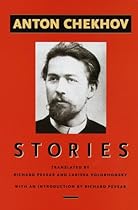Nam Le’s book of short stories, The Boat, has an incredible range of settings, situations, and types of characters. The first story is the most traditional, the most stereotypical, perhaps (although this is not to say it’s not a good story), with its main character who is a student in the famous Iowa creative writing program. From there, though, we take off to Colombia and read about 14 year old hitmen (hit children?) and then to New York City, Australia, Japan, Iran, and Vietnam. Le writes about each of these places with admirable ease and assurance, describing them as though he knows the places and the people intimately (leading me to speculate about the author’s life, although I generally try to be more sophisticated than that).
The stories are all action-filled, each one centering on some highly dramatic moment, often a violent one. For example, the story set in Iran tells of political protests and arrests through the lens of two estranged friends trying to understand each other, and the Australia story tells of teenage love, jealousy, bullying, and schoolyard fights. The last story is a harrowing account of Vietnamese “boat people” on a journey that lasted much longer than it should have.
But these stories aren’t simply interesting for their plot; they are wonderfully written as well. Le’s sentences beautifully capture the characters’ exterior world as well as their interior landscapes; they often startle you with a brilliant image or an unexpected observation. At times the writing veers toward stream of consciousness as Le takes you deep into a character’s mind. Here’s a passage that shows how Le writes about action and consciousness all at once:
Finally the storm arrived in force. The remaining light drained out of the hold. Wind screamed through the cracks. She felt the panicked limbs, people clawing for direction, sudden slaps of ice-cold water, the banging and shapeless shouts from the deck above. The whole world reeled. Everywhere the stink of vomit. Her stomach forced up, swashed through her throat. So this was what it was like, she thought, the moment before death.
She closed her eyes, swallowed compulsively; tried to close out the crawling blackness, the howl of the wind. She tried to recall her father’s stories — storms at sea, waves ten, fifteen meters high! — but they rang shallow against what she’d just seen: those dense roaring slabs of water, sky lurching overhead like a puddle being mucked with a stick. She was crammed in by a boatload of human bodies, thinking of her father and becoming overwhelmed, slowly, with loneliness. As much loneliness as fear. Concentrate, she told herself. And she did — forcing herself to concentrate, if not — if she was unable to — on the thought of her family, then on the contact of flesh pressed against her on every side, the human warmth, feeling every square inch of skin against her body and through it the shared consciousness of — what? Death? Fear? Surrender? She stayed in that human cocoon, heaving and rolling, concentrating, until it was over.
How can you read this and not want to know what happens next and also not want to know more about this young person caught in horrible circumstances?
The stories have an interesting metafictional element too. The first story about the creative writing student seems highly autobiographical (particularly as the character shares the author’s name), and in it, the character grapples with the question of whether he should write about Vietnam. Ethnic lit., he is told, is incredibly hot right now, and he could exploit that trend with tales about his father, a victim of the war, and with stories about Vietnamese boat people. A friend tactlessly tells him:
You could totally exploit the Vietnamese thing. But instead, you choose to write about lesbian vampires and Colombian assassins, and Hiroshima orphans — and New York painters with hemorrhoids.
Interestingly enough, most of the stories his friend lists appear in Le’s book (the lesbian vampire story isn’t there, unfortunately). So the whole collection becomes an exploration of writing and identity. What should a person write about? Should a person write about his or her roots, particularly if that’s what people want to read about and if it’s more likely to get published? Should a person instead explore other worlds?
Le does both of these things, writing about the familiar (he himself was a student in the Iowa program) and writing stories about Vietnam (the first story about personal consequences of the Vietnam War and also the closing story about the boat people) and also writing stories about places and situations that seem remote from him. The book seems to argue that a writer can have it all, can write about his experiences and can stray far from them. And why not?
I admire the way Le uses the opening story to prepare the reader for the rest of the book and the way that story gives it a kind of unity, while at the same time the collection as a whole is incredibly diverse. Added to this unity-in-diversity is a self-awareness I admire, a questioning attitude about the relationship of writers to their material. All-in-all, Le has managed to pull off a pretty wonderful feat with this book.
 I loved reading Chekhov's stories. I read a volume of them,
I loved reading Chekhov's stories. I read a volume of them, 

